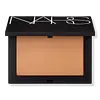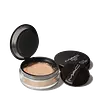NARS Cosmetics Light Reflecting Pressed Setting Powder Versus Mac Cosmetics Studio Fix Pro Set + Blur Weightless Loose Powder
What's inside
What's inside
 Key Ingredients
Key Ingredients

 Benefits
Benefits

 Concerns
Concerns

 Ingredients Side-by-side
Ingredients Side-by-side

Synthetic Fluorphlogopite
Mica
Cosmetic ColorantHdi/Trimethylol Hexyllactone Crosspolymer
Cetearyl Ethylhexanoate
EmollientSqualane
EmollientGlycerin
HumectantOctyldodecyl Stearoyl Stearate
EmollientChondrus Crispus Extract
Skin ConditioningAscophyllum Nodosum Extract
Skin ConditioningSilica
AbrasiveEthylhexylglycerin
Skin ConditioningCaprylyl Glycol
Emollient1,2-Hexanediol
Skin ConditioningPolysorbate 20
EmulsifyingDimethicone
EmollientPentaerythrityl Tetra-Di-T-Butyl Hydroxyhydrocinnamate
AntioxidantZinc Stearate
Cosmetic ColorantXanthan Gum
EmulsifyingCitric Acid
BufferingSea Water
HumectantLauroyl Lysine
Skin ConditioningDicalcium Phosphate
AbrasivePotassium Sorbate
PreservativePhenoxyethanol
PreservativeIron Oxides
CI 77891
Cosmetic ColorantSynthetic Fluorphlogopite, Mica, Hdi/Trimethylol Hexyllactone Crosspolymer, Cetearyl Ethylhexanoate, Squalane, Glycerin, Octyldodecyl Stearoyl Stearate, Chondrus Crispus Extract, Ascophyllum Nodosum Extract, Silica, Ethylhexylglycerin, Caprylyl Glycol, 1,2-Hexanediol, Polysorbate 20, Dimethicone, Pentaerythrityl Tetra-Di-T-Butyl Hydroxyhydrocinnamate, Zinc Stearate, Xanthan Gum, Citric Acid, Sea Water, Lauroyl Lysine, Dicalcium Phosphate, Potassium Sorbate, Phenoxyethanol, Iron Oxides, CI 77891
Polymethylsilsesquioxane
Synthetic Fluorphlogopite
Silica
AbrasiveDimethicone
EmollientTriethoxycaprylylsilane
Ethylhexylglycerin
Skin ConditioningCaprylyl Glycol
EmollientDiisostearyl Malate
EmollientPentaerythrityl Tetraethylhexanoate
EmollientHydrogenated Lecithin
EmulsifyingTocopherol
AntioxidantSodium Dehydroacetate
PreservativeMica
Cosmetic ColorantCI 77891
Cosmetic ColorantCI 77491
Cosmetic ColorantCI 77492
Cosmetic ColorantCI 77499
Cosmetic ColorantCI 42090
Cosmetic ColorantCI 77288
Cosmetic ColorantCI 77742
Cosmetic ColorantCI 73360
Cosmetic ColorantCI 77007
Cosmetic ColorantCI 19140
Cosmetic ColorantCI 15985
Cosmetic ColorantPolymethylsilsesquioxane, Synthetic Fluorphlogopite, Silica, Dimethicone, Triethoxycaprylylsilane, Ethylhexylglycerin, Caprylyl Glycol, Diisostearyl Malate, Pentaerythrityl Tetraethylhexanoate, Hydrogenated Lecithin, Tocopherol, Sodium Dehydroacetate, Mica, CI 77891, CI 77491, CI 77492, CI 77499, CI 42090, CI 77288, CI 77742, CI 73360, CI 77007, CI 19140, CI 15985
Ingredients Explained
These ingredients are found in both products.
Ingredients higher up in an ingredient list are typically present in a larger amount.
Caprylyl Glycol is a humectant and emollient, meaning it attracts and preserves moisture.
It is a common ingredient in many products, especially those designed to hydrate skin. The primary benefits are retaining moisture, skin softening, and promoting a healthy skin barrier.
Though Caprylyl Glycol is an alcohol derived from fatty acids, it is not the kind that can dry out skin.
This ingredient is also used as a preservative to extend the life of products. It has slight antimicrobial properties.
Learn more about Caprylyl GlycolCi 77891 is a white pigment from Titanium dioxide. It is naturally found in minerals such as rutile and ilmenite.
It's main function is to add a white color to cosmetics. It can also be mixed with other colors to create different shades.
Ci 77891 is commonly found in sunscreens due to its ability to block UV rays.
Learn more about CI 77891Dimethicone is a type of synthetic silicone created from natural materials such as quartz.
What it does:
Dimethicone comes in different viscosities:
Depending on the viscosity, dimethicone has different properties.
Ingredients lists don't always show which type is used, so we recommend reaching out to the brand if you have questions about the viscosity.
This ingredient is unlikely to cause irritation because it does not get absorbed into skin. However, people with silicone allergies should be careful about using this ingredient.
Note: Dimethicone may contribute to pilling. This is because it is not oil or water soluble, so pilling may occur when layered with products. When mixed with heavy oils in a formula, the outcome is also quite greasy.
Learn more about DimethiconeEthylhexylglycerin (we can't pronounce this either) is commonly used as a preservative and skin softener. It is derived from glyceryl.
You might see Ethylhexylglycerin often paired with other preservatives such as phenoxyethanol. Ethylhexylglycerin has been found to increase the effectiveness of these other preservatives.
Mica is a naturally occurring mineral used to add shimmer and color in cosmetics. It can also help improve the texture of a product or give it an opaque, white/silver color.
Serecite is the name for very fine but ragged grains of mica.
This ingredient is often coated with metal oxides like titanium dioxide. Trace amounts of heavy metals may be found in mica, but these metals are not harmful in our personal products.
Mica has been used since prehistoric times throughout the world. Ancient Egyptian, Indian, Greek, Roman, Aztec, and Chinese civilizations have used mica.
Learn more about MicaSilica, also known as silicon dioxide, is a naturally occurring mineral. It is used as a fine, spherical, and porous powder in cosmetics.
Though it has exfoliant properties, the function of silica varies depending on the product.
The unique structure of silica enhances the spreadability and adds smoothness, making it a great texture enhancer.
It is also used as an active carrier, emulsifier, and mattifier due to its ability to absorb excess oil.
In some products, tiny microneedles called spicules are made from silica or hydrolyzed sponge. When you rub them in, they lightly polish away dead skin layers and enhance the penetration of active ingredients.
Learn more about SilicaSynthetic Fluorphlogopite is the synthethic version of mica. It consists of fluorine, aluminum and silicate.
Synthetic Fluorphlogopite is used to add volume to products.
It is considered non-irritating on the skin.
Learn more about Synthetic Fluorphlogopite